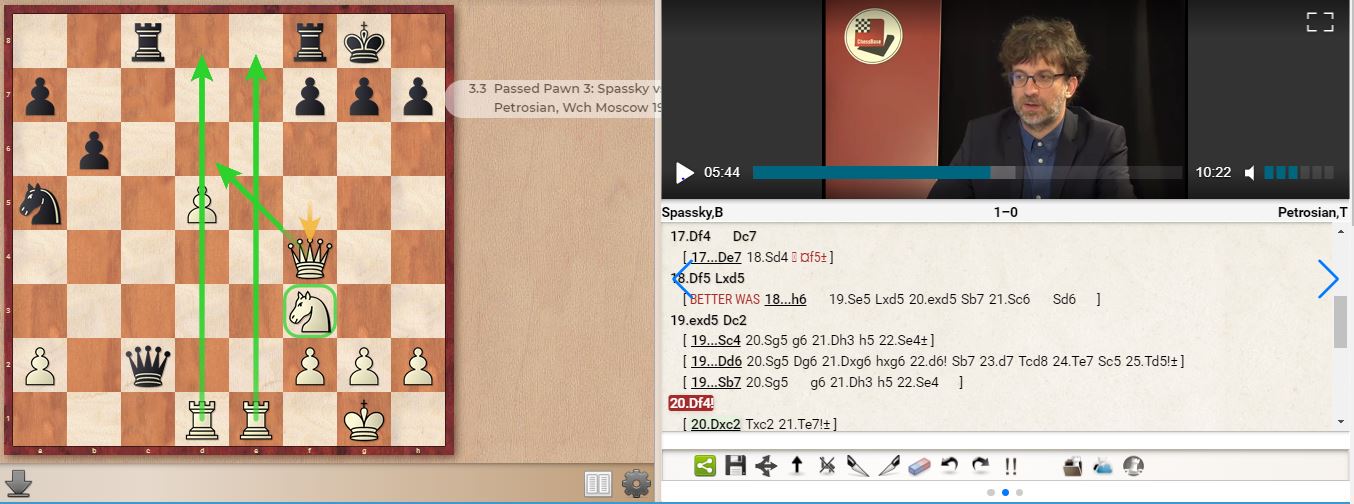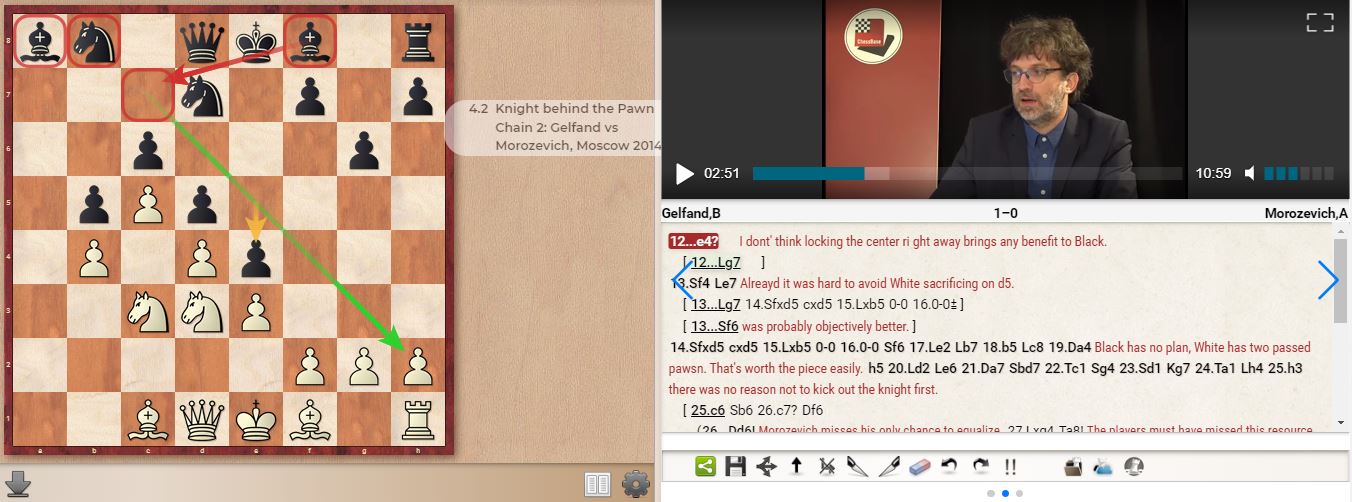Chess could almost be easy if it weren't for the strange, angular way in which the knights move. What's more, knights can jump over other pieces. On the other hand, they can only reach a neighbouring square with great difficulty, they look dim on the rim, and when they are in the corner, they usually make you want to call global animal rescue. But maybe the players who have to deal with the knights - and the opponent - deserve even more pity.
To help you do this a little better, Jan Markos has not only taken on queens, rooks and bishops in his series "Middlegame Secrets", but now also knights. In his usual calm manner, he discusses the chances and risks of using these pieces in episode 4, "The Secret Lives of Knights". Carefully selected examples from current and past grandmaster practice illustrate the variety that knights bring to the royal game. And reassuring for the learner: the examples also show world-class players who are at odds with their knights.
Unveiling the Secrets of the Knights
The experienced Slovakian trainer Jan Markos divides the strategies and tactics for the correct use of knights into six chapters. He not only discusses the advantages of knights, but also deals with knights that have fallen asleep behind pawn chains.
Free sample video: Introduction
Here are some of the highlights of the video course:
Chapter 2: Knight dominating the Bishop

We start with one of Markos's co-authors: together with top Czech player David Navara Markos wrote the award-winning book 'The Secret Ingredient to Winning at Chess'. Navara shows a game he played against Fabiano Caruana, in which a white knight on d5 played a dominating role in the Sveshnikov Sicilian - Markos' favourite opening. There is a lot to learn here about the right moment to exchange pieces. Game 4 is also instructive - here Navara shows how to win with an isolated queen's pawn and a knight fighting against a bishop.
In game 3 Vishy Anand proves that he also knows something about the right exchange. In a game against Loek Van Wely he gave up his bishop pair to establish an outpost on d5, where his knight dominated Black's bad bishop.

Chapter 3: A Knight's Best Friend - the Passed Pawn
Here, Markos first takes us on a journey through his own history: missing a win against Viktor Korchnoi still haunts him 18 years later.

In their World Championship match 1969 Boris Spassky did better against Tigran Petrosian: his knight stayed always close to the passed pawn, and in some variations he even threatened to attack Black's king, which showed its range.
Chapter 4: Knight behind the Pawn Chain
"A common misconception is that knights generally feel comfortable in closed positions – this is only partly true. If they are permanently locked behind the pawn chain and there is no outpost in sight, they don't feel any better than a chicken in a cage."

Markos shows how a world-class player like Alexander Morozevich makes a terrible strategic mistake. The correct plan would be …Bg7, …Nf8-e6. After …e4, it remains impossible to get the bishop to c7 in order to launch an attack, and at the same time the centre is closed and Black no longer has any pressure on d4, but remains stuck on the weaknesses on a8 and b8. Strictly speaking, the position is already lost due to the inactive pieces. White, on the other hand, can fight the black chain of pieces by means of a sacrifice or by means of a lever on f3. White quickly sacrifices the knight on d5 and wins with the two passed pawns on the b- and c-lines in an astonishingly simple and strategically convincing manner.
Chapter 5: Restricting the Knight
It's not just about using your knight to win, but also about taking your opponent's knight out of the game – which is often done with pawns.

Which knight should White restrict? The one on h6, because it's easier to achieve that with pushing the white pawn to g4, though this creates holes on f4 and h4. White is practically a piece up, and Black will soon run out of moves (Swiercz-Idani).
In another example, Alexei Shirov, who was playing with Black, tried to surprise Garry Kasparov in a Sveshnikov Sicilian by retreating with his knight to b8. Kasparov countered with an exchange sacrifice on b7, after which Black's knight was stranded on b7 - see the free sample video.
Chapter 6: Outposts
Apparently, becoming World Champion led to a deep psychological crisis for Ding Liren – but in the illustrative game against Alexander Grischuk given by Markos, Ding showed world-class strategic understanding. The game Bent Larsen vs. Peter Svidler is also a fine example how a knight should fight against the pair of bishops.
Chapter 7: The Art of Spotting Outposts
"My favourite chapter" – that's how Jan Markos describes the last chapter before the tasks, in which you can test your knowledge. In this chapter Markos explains how to spot outposts and examines interesting ideas in various openings, such as the Reti, Queen's Pawn Openings with the Karlsbad structure or the Sicilian Maroczy. He analyses one of his own games, a victory by Etienne Bacrot and three wins by World Champions, in which Vladimir Kramnik, Vassily Smyslov and Tigran Petrosian show how to handle the knights.

The perfect Karlsbad knight defends the queenside and is ready to join an attack on the kingside
Summary
Throughout the course and in all his examples, Markos gives a whole range of good, practical advice to find good squares for the knights - which should help to improve your game.
Knights add irrational content to any position. However, in this video tutorial you will learn how to tame them.























